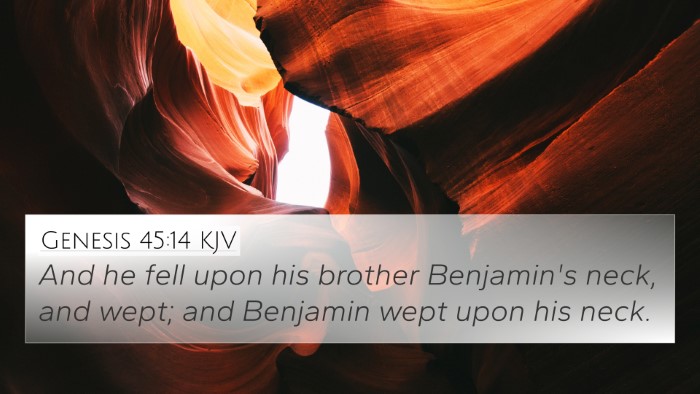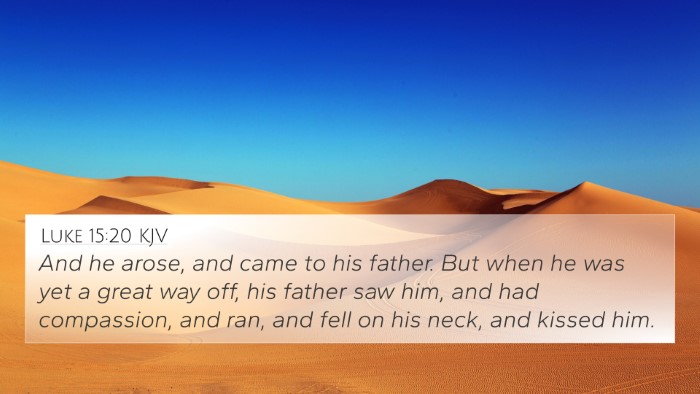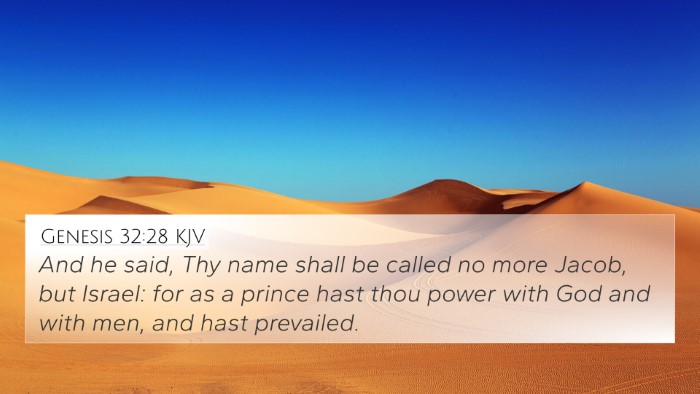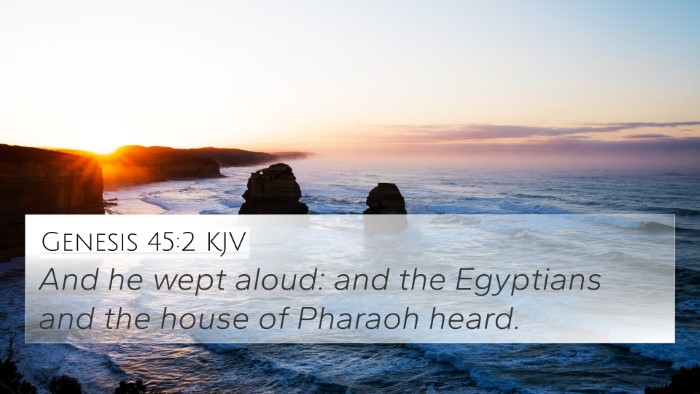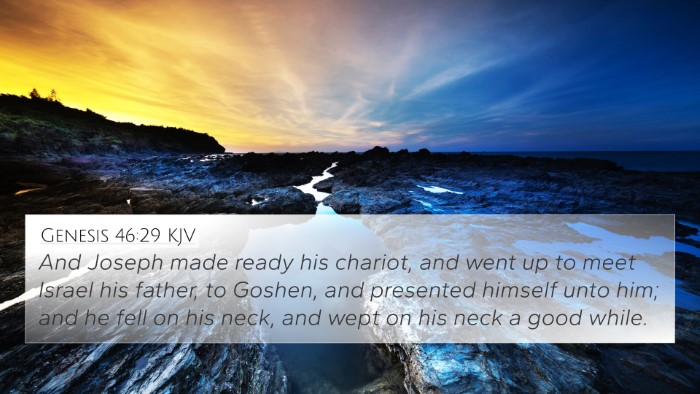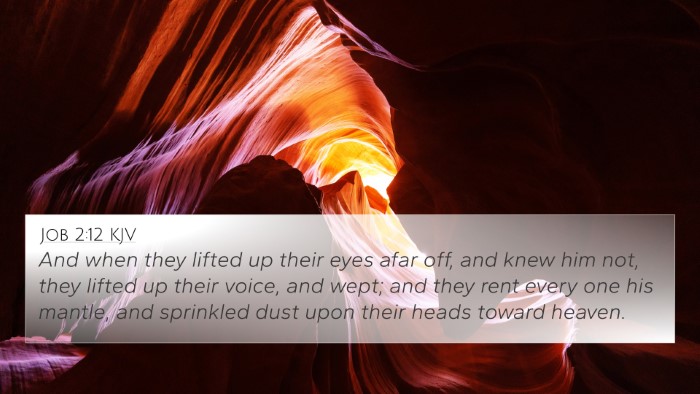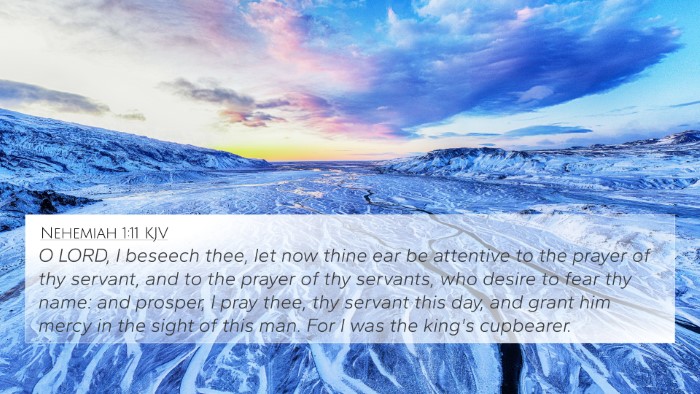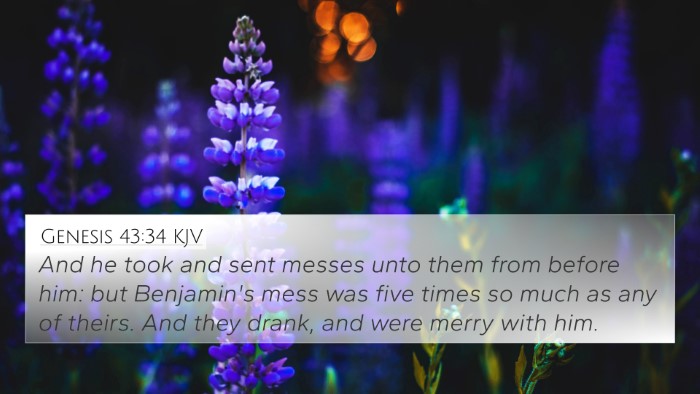Understanding Genesis 33:4
Genesis 33:4 states, "But Esau ran to meet him, and embraced him, and fell on his neck, and kissed him: and they wept." This verse captures a profound moment of reconciliation between Jacob and Esau, which had been long anticipated after years of estrangement and conflict. Here, we explore its meaning through the insights of various public domain commentaries.
Commentary Analysis
Matthew Henry’s Commentary
According to Matthew Henry, this passage showcases the transformative power of forgiveness and reconciliation. After a long period of animosity, Esau's warm reception illustrates the healing of past wounds. Henry emphasizes that this encounter signifies God's grace in restoring broken relationships. He also notes the emotional intensity of the moment, marked by both joy and tears, highlighting the depth of familial bonds that can endure even after conflict.
Albert Barnes’ Commentary
Albert Barnes reflects on the significance of Esau's actions in this verse. He points out that Esau's running towards Jacob represents a departure from the expected response of anger or vengeance. Instead, it embodies a spirit of love and acceptance. Barnes further elaborates on the cultural context of such acts of affection and the implications of this reconciliation, indicating that it was a powerful display of familial love that prevailed over previous grievances.
Adam Clarke’s Commentary
Adam Clarke provides insights into the emotional components of this passage. He notes that Esau, by embracing Jacob, demonstrates an unreserved acceptance that speaks to the heart of filial forgiveness. Clarke emphasizes that this action is not just a physical embrace but symbolizes the healing of deep-seated rifts, reinforcing the biblical theme of restoration and mercy. He also delves into the contrasting attitudes displayed by Jacob and Esau throughout their narrative, showcasing a remarkable transformation in characters.
Thematic Connections
Genesis 33:4 serves as a pivotal moment illustrating themes of forgiveness and reconciliation throughout biblical texts. Below are several Bible cross-references that relate to this verse:
- Luke 15:20 - The Parable of the Prodigal Son, which similarly depicts a fatherly embrace after estrangement.
- Matthew 5:23-24 - An admonition to reconcile with brothers before offering gifts at the altar, emphasizing the priority of harmonious relationships.
- Colossians 3:13 - Encouragement to forgive one another as the Lord forgave, echoing similar themes of restoration.
- Ephesians 4:32 - A call to kindness and forgiveness, linking closely with Jacob and Esau's encounter.
- Acts 7:9-10 - Joseph’s reconciliation with his brothers shows a parallel in familial forgiveness.
- Romans 12:18 - An exhortation to live peaceably with all, reflecting the peace achieved in Genesis 33.
- James 5:16 - Encouragement to confess faults to one another, resonating with the theme of restoring relationships.
Applications of Cross-Referencing
When studying the connections between different Bible verses, such as Genesis 33:4 and the ones listed above, it is beneficial to utilize various tools for Bible cross-referencing. These tools can help in identifying thematic elements and in performing a comparative Bible verse analysis. Through cross-referencing, one can uncover deeper understandings of biblical themes, aiding in personal study, sermon preparation, or teaching.
Using Cross-References for Deeper Insight
To effectively use Bible cross-references:
- Utilize a Bible concordance to find related verses that support key themes.
- Explore a Bible cross-reference guide for systematic study, aiding the interpretation of specific scriptures.
- Engage in inter-Biblical dialogue to uncover relationships and teachings that span both Old and New Testament texts.
Conclusion
Genesis 33:4 encapsulates the powerful theme of reconciliation, inviting readers to reflect on the importance of forgiveness and familial bonds. By examining the connections between this verse and others, one can gain richer insights into the Bible's overarching messages about love, mercy, and redemption. Utilizing cross-referencing methods enhances the study of scripture, leading to deeper understanding and meaningful application in one’s life.



